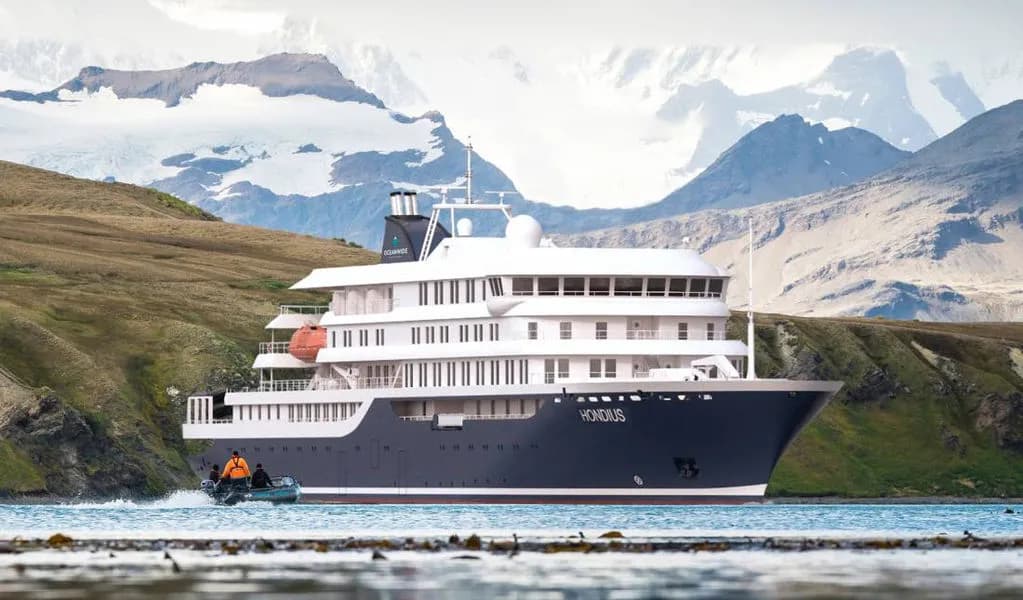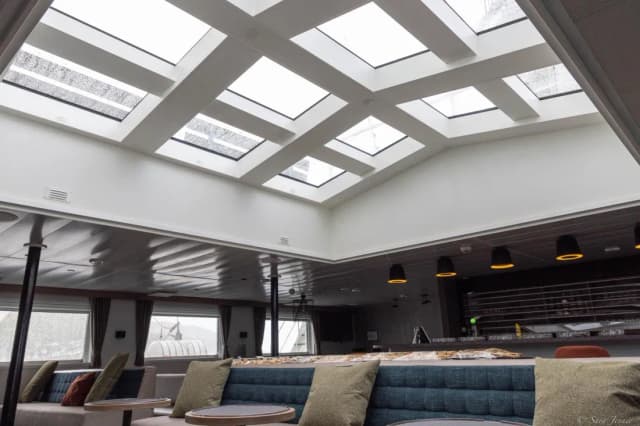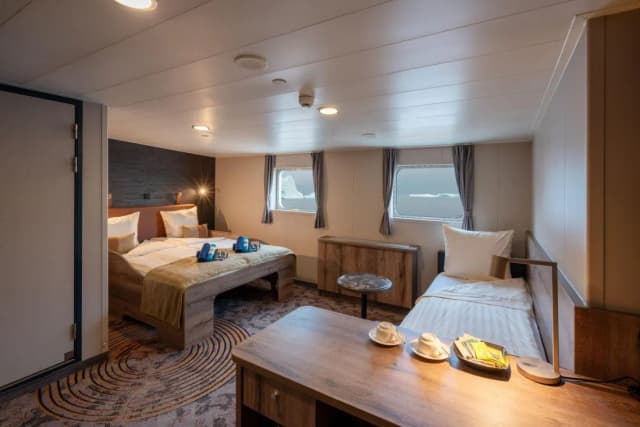Hondius
M/V Hondius is a modern, ice-strengthened expedition vessel offering luxurious polar cruises, comfortable cabins, expert guides, and incredible wildlife encounters in the Arctic and Antarctica.
Trip dates, price & live availability
Cabins
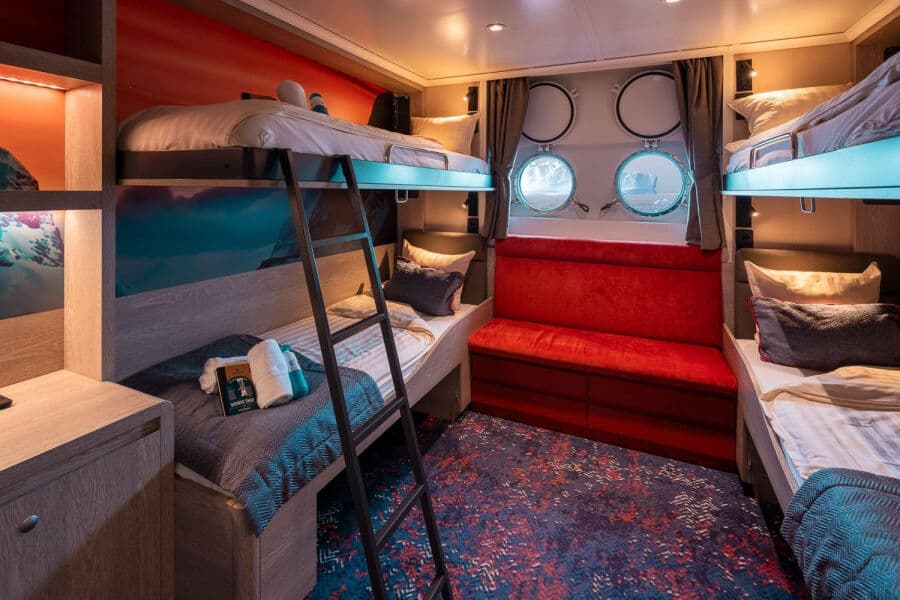
Quadruple Porthole
Air Conditioning (AC)
Fan Ventilator
TV
Wifi
Toilet
Shower
Bathtub
Hair Dryer
Safe
Refrigerator
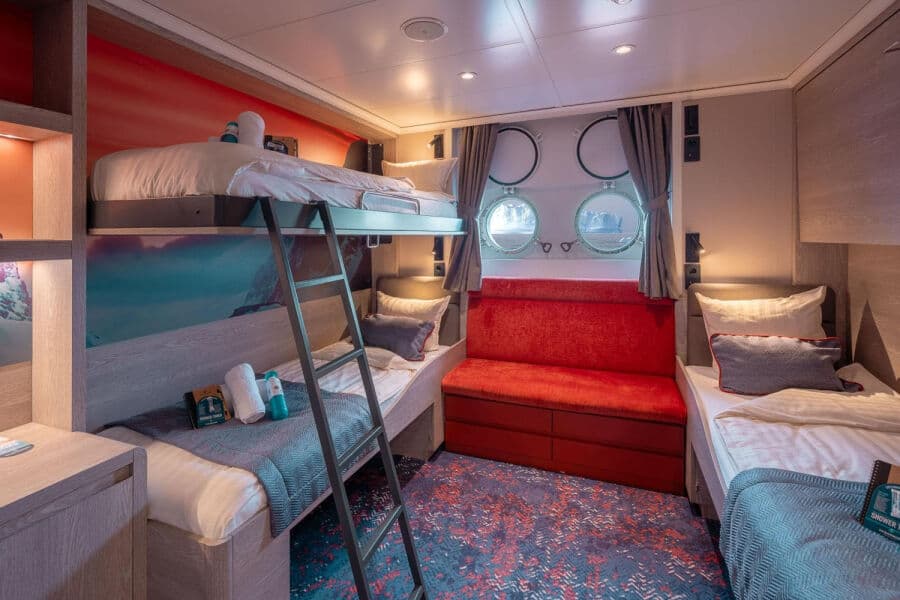
Triple Porthole
Air Conditioning (AC)
Fan Ventilator
TV
Wifi
Toilet
Shower
Bathtub
Hair Dryer
Safe
Refrigerator
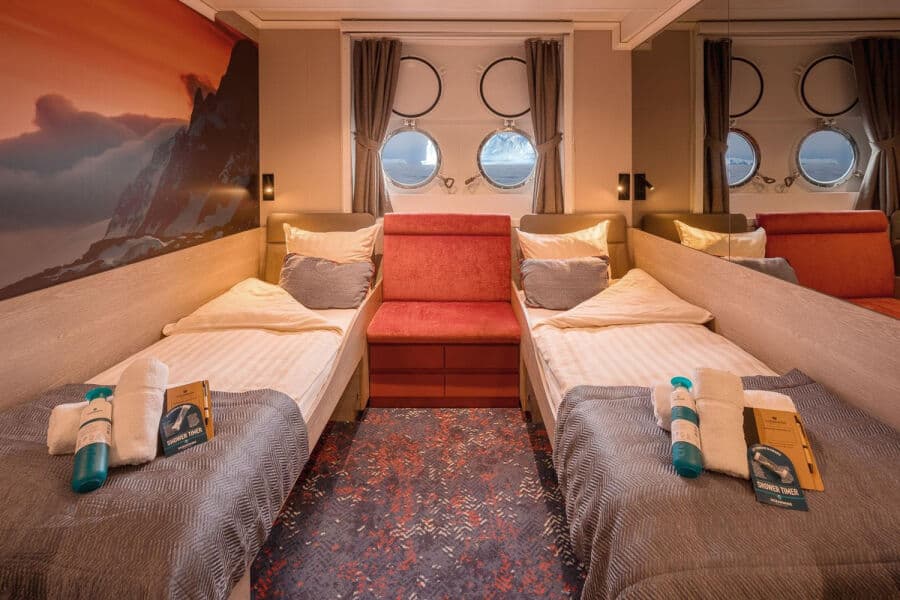
Twin Porthole
Air Conditioning (AC)
Fan Ventilator
TV
Wifi
Toilet
Shower
Bathtub
Hair Dryer
Safe
Refrigerator
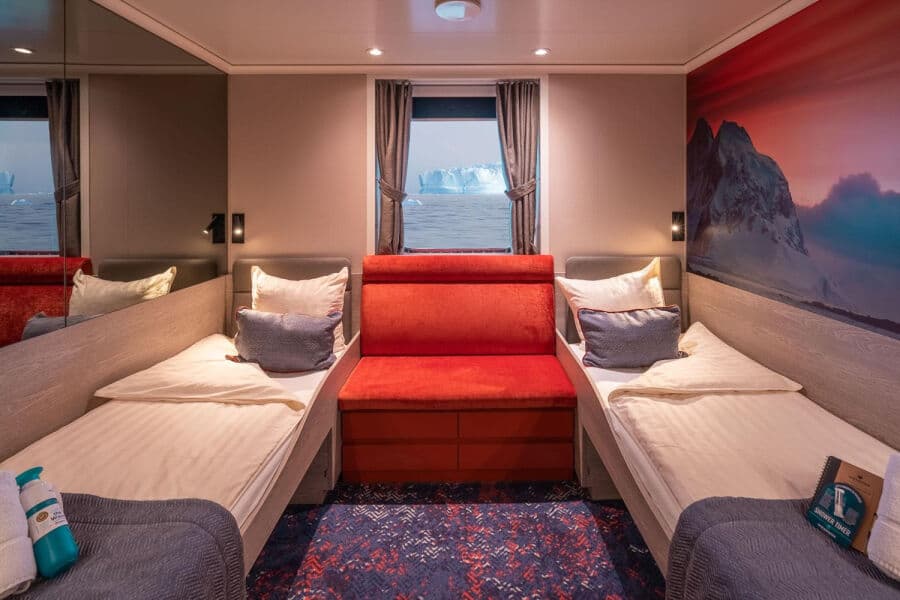
Twin Window
Air Conditioning (AC)
Fan Ventilator
TV
Wifi
Toilet
Shower
Bathtub
Hair Dryer
Safe
Refrigerator
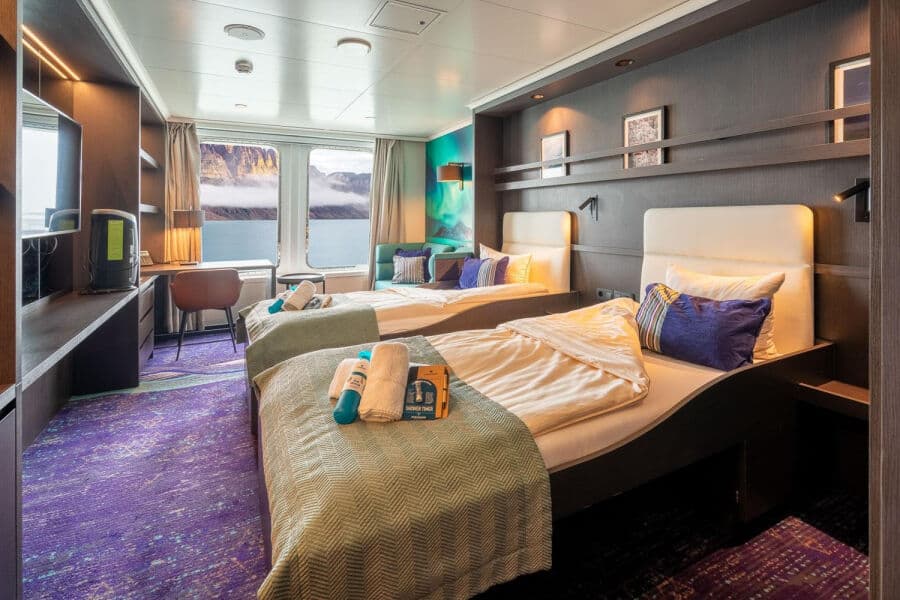
Twin Deluxe
Air Conditioning (AC)
Fan Ventilator
TV
Wifi
Toilet
Shower
Bathtub
Hair Dryer
Safe
Refrigerator
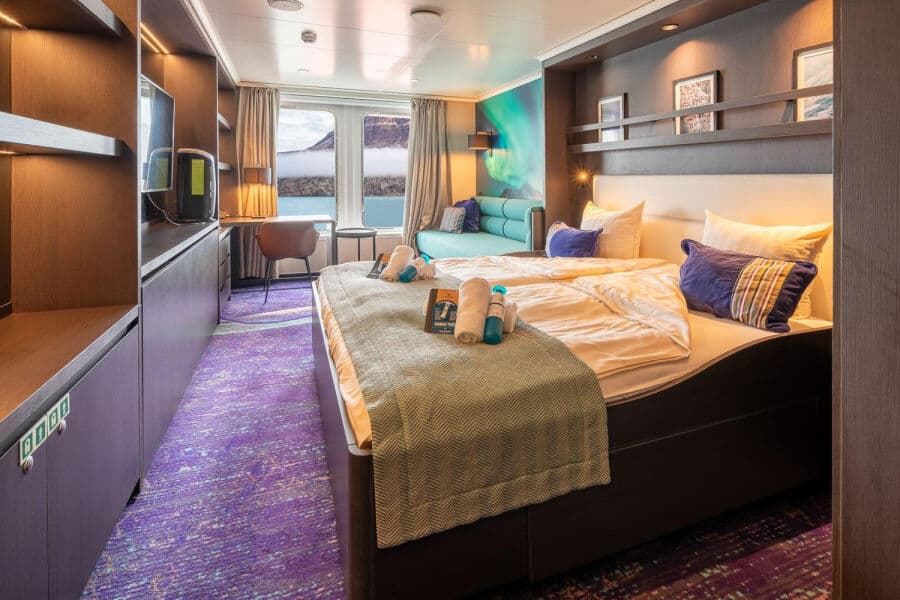
Superior
Air Conditioning (AC)
Fan Ventilator
TV
Wifi
Toilet
Shower
Bathtub
Hair Dryer
Safe
Refrigerator
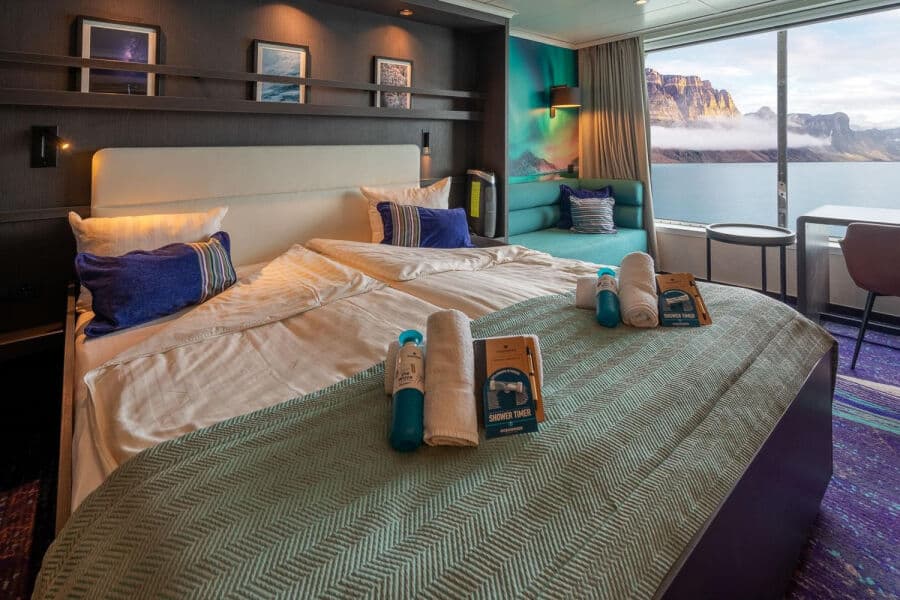
Junior Suite
Air Conditioning (AC)
Fan Ventilator
TV
Wifi
Toilet
Shower
Bathtub
Hair Dryer
Safe
Refrigerator
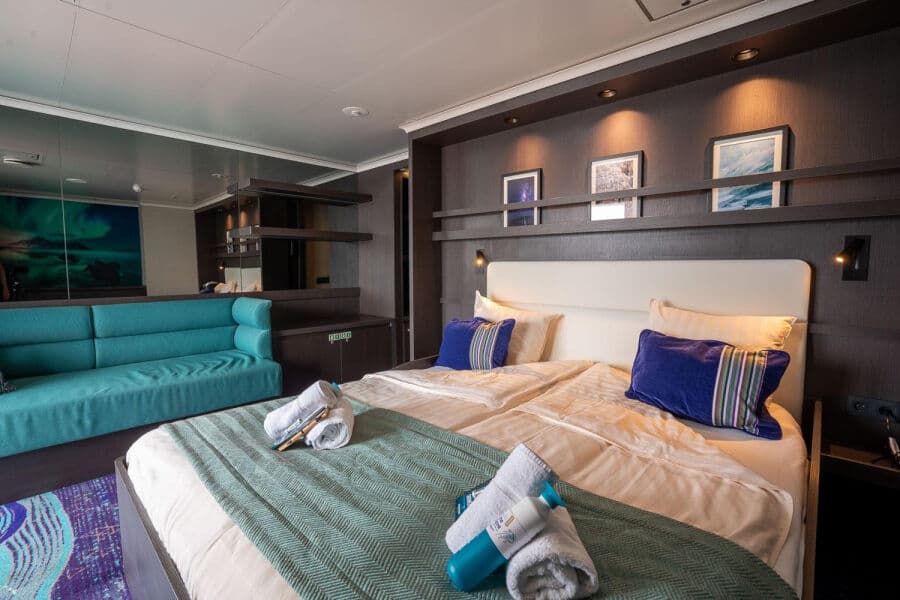
Grand Suite with private balcony
Air Conditioning (AC)
Fan Ventilator
TV
Wifi
Toilet
Shower
Bathtub
Hair Dryer
Safe
Refrigerator
Deck plan
Features & facilities
Boat features & facilities
Restaurant/lecture room on deck 3
Dinner Room on deck 4
Spacious observation lounge (with bar) on deck 5 with large windows, offering full panorama view as well as lecture and observation decks
Separate library rooms
Large open deck spaces (with full walk-around possibilities on deck 4)
Dive features & facilities
Compressor: Onboard, there are a Bauer compressor (200 liters), 35 steel bottles of 12 liters each, 200 bar, with DIN and Yoke adaptable connections and two separate outlets
Weights: You will be provided with hard led weights and a belt
Zodiacs with strong out-board motors
Dive Buddy system
1-2 days per day (depending on the weather)
8 divers per dive guide
Maximum number of diving passengers: 24
Location
Trips depart from Ushuaia, on the island of Tiera del Fuego in Argentina.
Dive Overview
Antarctica offers a unique and thrilling polar diving experience as one of the last grand and remote areas of wilderness on earth. Divers get to take part in the pioneering exploration of these isolated waters, viewing stunning ice formations, glaciers, and some of the globe's most rarely seen wildlife.
[See: Antarctica Dive Travel Guide]
Accommodation Overview
Hondius offers high-quality accommodation for 170 passengers in in 6 grand suites with balcony (27square meters), 8 junior suites (19-20square meters), 8 superior cabins (20-21square meters), 11 twin deluxe cabins (19-21square meters), 14 twin window cabins (12-14square meters), 27 twin porthole cabins, 2 triple porthole cabins and 4 quadruple porthole cabins (porthole cabin sizes vary from 12-18square meters.)
Grand Suite (LEFT) & Junior Suite (RIGHT)
Twin Deluxe (LEFT) & Twin Porthole (RIGHT) Cabins
Twin Deluxe Bathroom
Lecture Room (LEFT) & Observation Deck (RIGHT)

Library
More information
Practical information
Language
English
Electricity
220v 60Hz
Local Currency
Credit card (Visa or MasterCard) or cash (Euro or Dollar)
